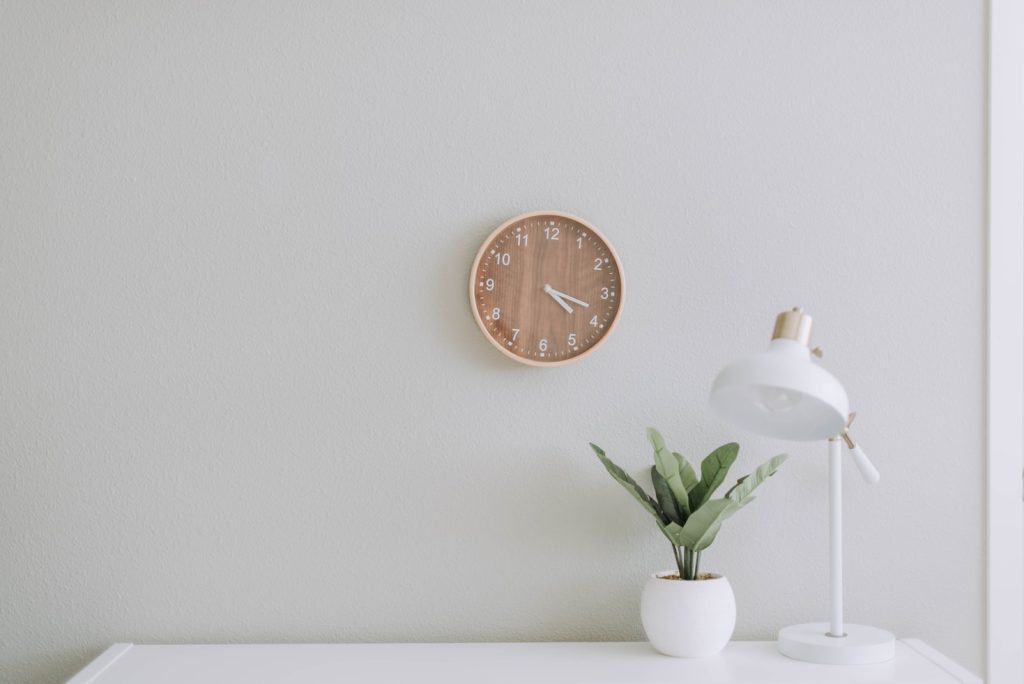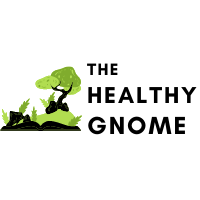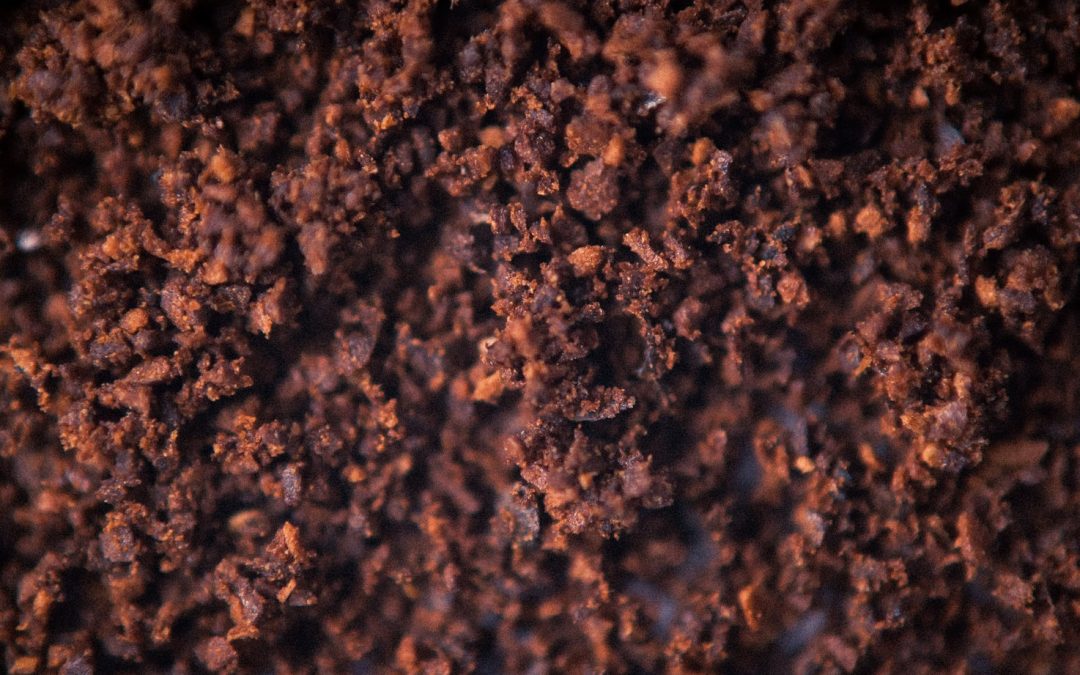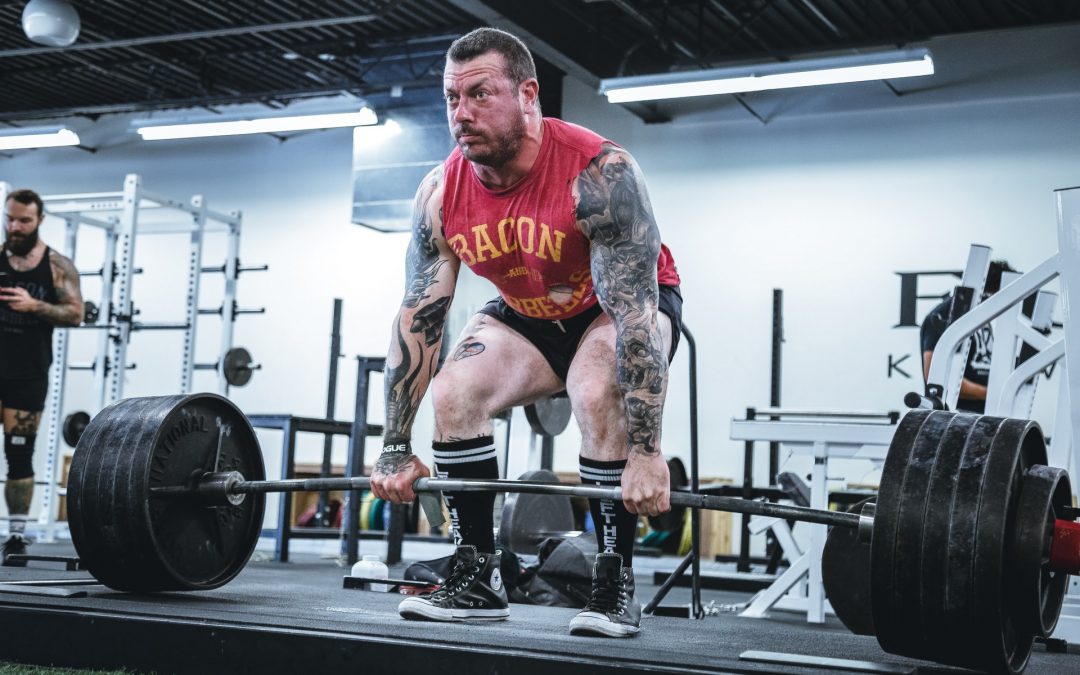
by Michael DeFelice | Last updated Jan 23, 2022 | Health and Wellness |
Approximately 98% of universities offer online classes, and roughly 50% of professors approve of virtual schools. The pandemic helped create a cosmic shift in the way people learn, but one issue remains: how to stay focused during online school.
And when I use the term “school,” this can mean:
- Online classes for:
- Online courses
- Corporate training / education
- Any type of distance learning
Unfortunately, many ways to stay focused in school don’t translate to online learning. For example, paying attention in class is easier for many people because an instructor will make sure they’re not on your phone, running to the refrigerator to grab a snack, playing video games or petting their dog.
Virtual classes give you a lot of freedom, but if you think back to your education, you’ll often find no one really teaches you how to stay focused while studying.
In fact, you never really learn how to learn.
If you want to learn how to learn, there’s a great, free class on the subject on Coursera called: Learning How to Learn: Powerful mental tools to help you master tough subjects. Barbara Oakley does a fantastic job instructing the class, and I’ve personally enjoyed it.
However, today we’re going to hone in on how to pay attention in online classes. We’re going to go through tips to stay focused, how not to get distracted during online school and actionable methods that you can apply to your learning today that will make a dramatic difference in your learning.
How to Stay Focused During Online School Using 9 Simple Hacks

1. Create a Dedicated Study Space
Online students are slowly retraining themselves on how to learn virtually. Want to know how to stay focused on studies? Create a dedicated space. Think of your actual class environment. What does it have?
- A desk or some place to take notes and open a book
- Organization, primarily because the desk is empty
- No clutter
Ideally, you’ll want to pick a room or space in your home where you have everything you need to learn. Notebooks, pencils, pens, organization tools and not much else. Your space should be clear of clutter and have the main goal of making it easy to learn.
If your space is cluttered, your mind will be cluttered.
2. Set Daily Schedules
Many people never truly learn how to stay focused in class because they allow themselves too much freedom. For example, a student in high school isn’t likely to create a strict class time, which includes:
- Class schedule
- Study schedule
Instead, they’ll give themselves little time to focus on schoolwork, cram everything in at the last minute and hope for the best.
Unfortunately, a lot of students do well with this last-minute hustle.
However, if you can’t focus on online classes, it’s eventually going to lead to poor study habits. You should create a schedule that works well for you, and your schedule can even evolve. For example:
- Monday: Class from 9am to 10:30am; Study time from 6pm to 7pm
- Tuesday: Class from 10am to 10:30am; Study time from 3pm to 4pm
One of the best things about remote learning is that focus time can often revolve around your schedule. Sure, if you have strict class start times, you may have less freedom to choose when to go to class, but you’ll always have the freedom to study on a schedule conducive to your type of learning.
You need to get to bed on time, wake up on time and remain consistent. In fact, studies show that your brain works to store external stimuli when you sleep. If you’re not sleeping enough, you’re hindering your brain’s ability to store the information you learn.
3. Create Daily Checklists
Many teens want to know how to stay focused in high school, and one of the best methods is to make daily checklists. If you’re in college, university, taking an online class for leisure or work or anything else, these same to-do lists will work great.
Simply:
- Create a list of things you need to get done
- Sort your list by each task’s priority
You may list everything from making coffee before class to mental breaks, study breaks, showering, etc.
If you have a daily checklist of all of the major tasks that you need to complete, it will make your day – and learning – much easier.
4. Block Background Noise
If you’re at home and hear someone else in the house talking or watching their favorite television show, it’s going to be very distracting for you. White noise is an excellent option because it will block noise so that you can focus on learning.
However, you need to find a way to block background noise for yourself.
Learning styles are different, so you may find that you’re best able to block noise with:
- Earphones
- Noise blocking headphones
- Classical music
- White noise
Simply find a way to ignore the noise and focus on your academic success.
5. Use Offline Tools
Education really has two parts:
- Instruction
- Studying
Your professor or teacher may spend an hour teaching you a subject that you study for four hours on your own. A major issue when people learn how to focus on online school is that they do everything online.
By everything, this means that they take all of their notes online, study online and go to class online.
If the Internet is down for a few hours, they shrug and just skip the day’s learning. You should be utilizing offline tools to help you study, too. A few of these tools are:
- Physical notebooks
- Books
- Stored media (offline mode)
In fact, a 2009 study suggests that handwriting may provide better recognition and recall than typing. Brain imaging seems to back this theory, too. So, if you’re taking notes online, it may be beneficial to start writing these notes out for better recall and also to use them offline, too.
How To Focus on Online Classes by Eliminating Distractions
When first researching how to stay focused during online school, it was apparent that time management and eliminating distractions would be crucial to your success. As someone that has been running a business from their house and learning online for over 10 years, I have a lot of firsthand experience on distractions.
And while I don’t have an answer for a needy dog wanting to play catch midday, I do have a few great, personal tips on eliminating distractions for long periods of time.
A few of the tips that work well for me to get rid of distractions are:
6. Create a No Person Allowed Space

Distractions are often associated with notifications on your phone, but some of the main distractions exist right in your home. For example, dogs, kids, parents, spouses and everything in between can become a distraction.
Actually, procrastination plays a major role in these distractions, too.
If you don’t want to log into your online class, you’ll decide it’s a great time to go ask a random question to anyone in the house.
However, you’re just putting off the inevitable and will need to go back to studying eventually. One method that works wonders for getting rid of distractions when studying is to make your designated study area your own space.
No one is allowed in this space while you’re studying.
Put a sign on the outside of the door. Lock the door. Do whatever it takes to keep other people from distracting you while you’re learning online.
7. Block Non-essential Notifications
Notifications on your phone, and to a lesser extent your computer, are going to be very distracting. The average person receives over 63 notifications a day, and if you’re trying to get anything done, you’ll quickly find that your productivity rate plummets from a single notification.
A few ways to block notifications are:
- Turn your phone on airplane mode
- Turn off all notifications
- Use an app
- Turn on Do Not Disturb Mode
Blocking notifications will allow you to focus on online courses and school.
8. Block Distracting Websites
One of the best tips for how to stay focused at work also applies to learning online: block distracting websites. There are numerous, technical ways to do this, but one of the easiest methods is to use a browser extension.
A few of the best options available, include:
Chrome
Firefox
If you don’t see the browser you use listed above, you’ll surely find equivalent options available.
9. Block Social Media Channels
Social media wastes 145 minutes of people’s time per day. Imagine your boss or teacher telling you that you need to spend 2 hours and 25 minutes of your day doing more work. Instead, you’re losing this same amount of time on social media.
Using the same extensions above, you’ll want to block all, non-essential social media channels.
By non-essential, we mean any social media channel you’re not using for school or your course. Additionally, you’ll want to shut off notifications on your phone or simply turn it upside down while you’re studying.
Figuring out how to stay focused during online school or classes takes a lot of time and effort. Everyone has a different attention span and learns in their own unique way. However, the tips above are a good starting point that you can build off to find your own ways to stay focused when learning online.

by Michael DeFelice | Last updated Feb 19, 2023 | Health and Wellness |
Sleep is crucial to your health, whether you’re trying to live a mindful life, build muscle or simply live your best life. But, if you’re like most people, you want to know how to get to bed on time because you procrastinate.
However, there’s a psychological and societal reason why people stay up late and can’t get to bed early.
If you think about your day, chances are you:
- Get up
- Shower
- Do your daily grooming
- Eat breakfast
- Head out to work
As usual, you’re stressed at work, struggling through the day and something won’t align with your goals for the day.
Maybe you lose 10 minutes stuck in traffic, and you need to pick up coffee because you know that without it, you’re going to be super grumpy in the morning. Add in the extra few minutes talking to your neighbor or walking the dog, and you barely have time to sit down.
It’s crazy how you start the day with the intention to get things done, but because you can’t stop staying up late, you just don’t have time to do everything you want to do.
So, what happens? Procrastination, or as some people call it, “revenge procrastination.”
You sacrifice sleep for more free time.
I do it, too. In fact, even the CEOs of the world that brag about sleeping 2 – 4 hours a night are sacrificing sleep for something else. Most people want to learn how to go to bed on time but won’t fix the main issue: lack of free time in your schedule.
We will discuss how to go to sleep earlier, stop staying up late and begin doing it today.
How to Get to Bed on Time Tonight Using 6 Sleep Hacks

1. Create a Good Sleep Routine
Yup. You need a routine. It’s easier to do pretty much everything with a plan. But, what should your sleep plan be?
Thankfully, there are sleep statistics that explain how much sleep the average person needs per night:
|
Age Group
|
Sleep Recommendation
|
|
6 – 12
|
9 – 12 hours of sleep
|
|
13 – 18
|
8 – 10 hours of sleep
|
|
18 – 60
|
7+ hours of sleep at night
|
|
61 – 64
|
7 – 9 hours a night
|
|
65+
|
7 – 8 hours a night
|
I know that’s it really easy to roll your eyes and skip this step. However, if you want to know how to get to bed on time, you need to know what “on time” means for you.
Use the table above to create your sleep plan. Insufficient sleep and a poor bedtime routine will have compounding consequences that force you into a destructive sleep pattern.
If you need to go to school or work and leave the house by 8 am, you’ll need to figure out how long it takes you to get ready in the morning, cushion it by 20 minutes and then determine what time to go to bed.
For example, if you need 1 hour to get ready in the morning, add 20 minutes to this time and you should be waking up at 6:40 in the morning. If you sleep 7 hours a night, you need to be sleeping (not sitting in bed thinking about the day) by 11:40.
2. Take a Shower or Bath – It’s Up to You
Do you want to know how to start going to bed earlier? Take a bath – or a shower. And you’ll also benefit from saving time in the morning.
A 2019 clinical review found that a 10-minute shower or bath about one or two hours before bedtime led to less sleep onset latency.
Why?
It likely has to do with a bath or shower changing your body temperature before bed.
So, as part of your bedtime plan, make it a point to add your shower into the mix.
3. Start with 15-minute Sleep Adjustment Increments
You already have a sleep routine that isn’t indicative of going to bed on time. And while it sounds great to change your sleep habits overnight, you’re likely setting yourself up for failure with such a drastic change.
Instead, you’ll want to make small sleep adjustments, initially.
Let’s say that you normally go to bed at 1 am, but you want to get to sleep earlier, you’ll want to make sure that you’re sleeping by 12:45.
After a day or two of going to bed 15 minutes earlier, you can readjust your schedule to go to bed at 12:30 and repeat until you hit your sleep time goal.
4. Take the Time to Stretch or Do Yoga
If you like to stretch or do yoga, you can add them to your before bed routine. There are many benefits to this bedtime ritual, including:
However, you don’t want to engage in fast-paced yoga or exercise before bed because it will have the exact opposite effect. A general rule of thumb is that if you’re sweating when stretching or doing yoga, slow down because you’re doing too much.
5. Exercise to Improve Your Nightly Sleep
Want to know how to get to bed on time? Exercise. A lot of people are filled with energy when their head hits the pillow, so they’ll spend hours thinking about the day, the next day, work, not falling asleep and so much more.
Exercise helps you reach deep sleep and will deplete your energy, too.
However, some people find that they can’t sleep well if they exercise too close to bedtime. Instead, try exercising a few hours before bed to see if it helps you repay some of your sleep debt.
6. Get Stuff Done During the Day
Getting to bed on time is not easy when you have no free time. The phenomenon of bedtime procrastination shows us that we’ll fight our natural body clock, suffer from poor sleep quality and enter sleep debt because we don’t have enough free time.
Why?
Many people procrastinate and never get what they need to get done before bed.
And since you’re doing chores, cooking, cleaning and doing everything in between until an hour before bed, you’ll stay up later. You’ll watch an extra episode of your favorite television show, FaceTime friends or troll social media because you want free time for yourself.
If you’re stuck in this rut and want to get to bed on time, you should try getting everything on your to-do list done during the day.
How to Get to Sleep Earlier by Changing Your Sleep Environment
If you want to learn how to sleep earlier and wake up early, you need to create an environment that is perfect for sleep. A few of the hacks to fall asleep earlier are:
- Change the thermostat. What’s the perfect sleep temperature? Studies suggest that your room should be between 60°F and 67°F if you want to maximize REM sleep – which you do.
- Remove distractions. Want to learn how to go to bed early? Get rid of the distractions that are keeping you awake. For example, it makes no sense to try going into bed earlier and then staying on your phone or laptop for 20 minutes. Instead, turn your phone upside down, leave the laptop in a different room and reserve your space for just sleeping. Also, try to keep your last screen time 20 – 30 minutes before you want to go to sleep.
- Darken the room. When I lived in an apartment, there was a bright light shining into my room in the middle of the night. There’s only so much tossing and turning, putting the pillow over my head and wishing that the electricity would go out that a single person could handle. Instead, I learned to darken the room. Blackout curtains were draped over the window, the sun never shined through, and if the world were ending, I would never have known. But. I could get to bed on time and sleep like the dead.
- Drown the noise out. As you can imagine, living in the bottom apartment also led to a lot of noise. Hearing children scream and jump from the heavens on to the ground jolted me out of bed for months. However, a white noise machine helped shut the unwanted noise out of my space and allowed me to sleep. If you have a lot of noise that keeps you awake at night or wakes you up before the alarm clock, try finding ways to eliminate the noise.
When trying to go to bed earlier, these tips really help. However, you can also try out natural sleep aids. A few of the hacks that work amazingly if you toss and turn a lot in bed, are:
- Tea. Herbal tea may be a good option for you. Chamomile tea can help you relax and fall asleep. However, if you get up in the middle of the night to go to the bathroom already, you may want to skip this one.
- Melatonin. Sleep experts recommend melatonin because it helps you induce sleep by regulating your circadian rhythm. If you have a sleep disorder or can’t seem to get sufficient sleep, melatonin supplements can help. However, these supplements should only be temporary and not relied on forever. Also, if you take too much melatonin, you might suffer from daytime sleepiness.
You can also try aromatherapy or other ways to wind down for the night. In fact, we wrote an entire post on this very subject.
Learn How to Wind Down for the Night with 12 Simple Tips.
How to Stop Staying Up Late Checklist

Are you a night owl that is trying to figure out how to stop staying up late at night? Sleep schedules are hard to maintain if you stay up late. An excellent checklist for how to get to bed early and stop staying up late are:
- Get stuff done during the day
- Stop feeling like you deserve extra time to stay up late
- Reduce blue light before bed (no smartphone)
- Slowly make the change
- Exercise
- Stretch
- Avoid caffeine, energy drinks and stimulants
- Avoid nicotine of any kind
- Skip naps
- Don’t watch TV or read in bed
- Get ready for bed before you’re tired
Nighty, Night!
Now that you know how to get to bed on time, it’s up to you to commit to following your sleep routine. Sure, you can go to a sleep specialist if nothing else works for you, but healthy sleep habits start with you.
A little effort, and following some of the tips above, will help you fight back against the effects of sleep deprivation, set an earlier bedtime and actually go to bed on time.

by Michael DeFelice | Last updated Mar 18, 2023 | Health and Wellness |
Coffee is fantastic to drink. A favorite drink worldwide, there are hot and cold brew coffee benefits that I’ve discussed previously.
But, there are also coffee scrub benefits!
Instead of drinking coffee, you’ll use the ground coffee beans to help with everything from removing dead skin cells to alleviating dry skin, stretch marks and even reducing the appearance of cellulite. Additionally, you can expand your blood vessels and increase blood flow.
What are the benefits of a coffee scrub?
We’re going to journey through a wide range of reasons why you may want to use your coffee grounds to make an excellent scrub of your own. But, of course, if you’re not interested in a DIY coffee scrub, you can go on Amazon or to many beauty stores and find coffee soaps and scrubs available.
6 Coffee Scrub Benefits You Never Want to Miss
1. Alleviate Inflammation
External inflammation, such as those caused by breakouts, can be soothed and calmed with the right scrub. Coffee scrub benefits for skin inflammation are possible thanks to two main compounds and substances in coffee:
- Polyphenols
- Hydroxycinnamic acid
Polyphenols are well-known and used in skincare because it’s a compound that is known for its anti-oxidant and anti-inflammatory properties. Additionally, there are immunomodulatory benefits of polyphenols, which make these compounds exceptional for both skin disorders and potentially skin cancer (view a great study here).
Hydroxycinnamic acid has been well-studied (view here), and it is found to have anti-inflammatory properties in vivo and vitro.
2. Restore Your Skin With a Coffee Scrub’s Anti-aging Power
Antioxidants are well-known for their ability to slow the aging process, and we already know that polyphenols are crammed with great antioxidants. When applied to the skin, coffee scrubs and honey (a great addition) can help you fight back against:
Of course, the scrub will also help tame inflammation, which has significant skin benefits. However, stopping inflammation isn’t enough to slow the aging process.
Right?
One study found that coffee offered the benefit of reducing pigmentation spots, protecting the skin from photoaging and also may decrease hyperpigmentation.
You might even want to try mushroom coffee because mushrooms are great for the skin and anti-aging.
3. Improve Blood Circulation
What benefits does coffee have when used in a body scrub? For one, it’s great for improving blood circulation in the body. If you have circulation issues, caffeine increases circulation in the body.
Caffeine, even when applied to the skin, is absorbed into the skin and bloodstream.
Improved circulation is just amazing for the body and skin because it helps pus more oxygen through the body. In addition, waste products are carried away, including free radicals, and all of this benefits your skin.
But, that’s not all of the benefits of a coffee scrub due to circulation.
Circulation also helps:
- Improve nutrient delivery to cells in the body
- Make the face look more vibrant
- Improves elastin and collagen production (here)
So, if you have poor circulation in your face or want to help alleviate swelling in your lower extremities, coffee scrubs can undoubtedly help.
4. Blast Cellulite Away
Cellulite impacts 90% of women and 10% of men. And if you’ve ever tried to get rid of cellulite, you know that this is a near-impossible feat. However, a scrub may help, but don’t expect miracles by any means.
Beauty magazines and websites are all touting the potential for coffee to help with cellulite.
First, cellulite is caused by fatty tissues that form under the skin and push against other tissue that’s closer to your skin’s surface. When you have cellulite, you’ll notice dimple-like areas on the surface of your skin.
If you try treating cellulite, you’ll find that the goal of most treatments is to reduce the appearance of these dimples.
How does a coffee scrub help cellulite?
There are a few ways:
- Blood vessels dilate and reduce the appearance
- Improved blood flow can tighten the skin in these areas and also remove excess fluids
- Antioxidants (yes, again) help improve skin tone
- Exfoliant coffee scrubs will remove dead skin cells to improve the skin’s appearance
Massaging in the scrub is also beneficial, according to the American Society for Dermatology Surgery. The group states that when you massage the area, with or without a scrub, it helps improve the appearance of cellulite by increasing lymphatic drainage and also stretching the skin’s tissue.
One study on a caffeine cream showed the potential for caffeine to be used as a cellulite treatment. However, since this was a cream and not a scrub, it remains to be seen if a scrub would offer the same great benefits.
5. Coffee Scrubs are Amazing for Your Hair
When I first dived into the research portion of this article, I knew about the benefits of coffee scrub for your skin, but I didn’t think it would offer hair benefits, too.
If you rub the scrub into your scalp, it will exfoliate the area and stimulate hair growth.
In fact, coffee benefits for hair include:
- Promote hair growth
- Remove clogged scalp pores
- Obliterate dead skin cells
Exfoliation also helps you get rid of dirt and oil buildup on the scalp. Simply massage the scrub into the scalp thoroughly and let it sit for five to ten minutes before rinsing.
And, over time, you’ll notice your hair grows faster and is healthier.
6. Remove Dead Skin Cells for Nicer Skin
Finally, another one of the great coffee body scrub benefits is the removal of dead skin. When you add sugar to your scrub, it will help exfoliate the skin and remove those dead skin cells that clog your pores, trap impurities and stop you from being your best, radiant self.
Exfoliation is crucial to maintaining a glowing complexion and allowing your skin to retain more moisture.
The amazing benefits of exfoliation will leave you with radiant skin. When applying, make sure to make circular motions, use warm water when removing the scrub and use fresh ground coffee instead of instant.
Also, if you like to wear make-up, exfoliating first will prep the skin for you.
We’ve learned a lot about coffee scrub benefits in this article, and now it’s time to give a scrub a try to see how they work for you. You can choose to make your own DIY coffee scrub or purchase a ready-made product.
Note: A lot of the studies surrounding coffee and its many benefits are related to consuming coffee. However, since these compounds, substances, and even caffeine are absorbed through the skin, many of the benefits of consuming coffee should also be experienced in a coffee scrub.

by Michael DeFelice | Last updated Nov 26, 2022 | Health and Wellness |
Over 62% of people in the United States drink coffee daily. Billions of people worldwide start their day with coffee, but we’re seeing a significant uptick in people drinking different variations of coffee. If you’ve been to Starbucks or other coffee shops, you may be wondering about the benefits of cold brew coffee.
We’re going to outline cold brew coffee benefits for you so that you know if drinking cold or hot coffee is the right choice for you.
But, we must mention one little thing.
If you’re adding whipped cream, flavorings and all of the extra jazz that makes your coffee sweeter than a bowl of sugar, you’re going to negate many of the potential health benefits we’re about to discuss.
6 Health Benefits of Cold Brew Coffee
1. Coffee Makes You Happy
For many people, coffee is one of the only things they look forward to in the morning.
Seriously.
People use coffee to boost their mood, and on a Monday morning when you don’t want to go to work, a cup of coffee may be all you need to feel a little bit better going into the week. A study was done on this very topic, and what it found was cold brew coffee:
- Enhanced mood in non-sleep deprived people
- Greatly improved the mood and alertness in sleep-deprived individuals
Plus, just look at your grumpy coworker that is unbearable when they haven’t consumed massive amounts of coffee in the morning. They can definitely benefit from some more coffee in their lives.
Both hot and cold coffee can make you happier!
2. Speed Up Your Metabolism to Burn Extra Calories
One of the benefits of drinking cold brew coffee that anyone trying to lose weight should know about is that coffee can help you shed excess weight. However, this benefit relates more to caffeine than it does to any specific type of coffee.
A study from 1989 showed that a single dose of 100 mg of caffeine boosted participants’ resting metabolic rate by 3 to 4 percent.
3. Coffee Works to Fight Off Depression

Some people are miserable in the morning until they have their cup of coffee – or multiple cups. And if you’re feeling down or a little depressed, your caffeine addiction may be the only thing saving you from a depressive breakdown.
Scientists from Qingdao University Medical College conducted a meta-analysis of previous studies in 2016 and found that coffee and caffeine helped:
- Reduce depression by 8%
- Improved depression when consuming above 68mg per day
Each cup of coffee adds to the reduction of depression until about 509mg per day, which is where researchers stopped tracking the coffee consumption of participants.
For your reference, a regular 8-ounce cup of coffee has about 95 mg of caffeine.
4. Lower Your Risk of Heart Disease With Cold Brew Deliciousness
A lot of research has been done on the benefits of cold brew coffee and your heart. While coffee makes some people’s hearts race, the compounds in coffee are actually very good for most peoples’ hearts. Many studies show that coffee is good for people with heart disease, including:
- Studies show that the benefits of refrigerated cold brew coffee are due to lignans, magnesium, quinides, trigonelline and phenolic compounds, which help lower blood pressure and stabilize blood sugar.
- One study found that drinking 3 to 5 cups of coffee can reduce heart disease risks by 15%.
However, the one exception to the rule is uncontrolled high blood pressure. High caffeine levels are a big no-no for someone with high blood pressure
5. Impacts Digestion Less Than Hot Coffee
Do you have a sensitive stomach? Cold brew coffee is perfect for digestive issues,
Hot coffee, which we’ll learn about more below, has higher acidity levels than cold brew. A few of the perks of having lower acidity levels in coffee, include:
- Lower chance of indigestion
- Reduces heartburn
Lower acidity levels irritate the stomach less, and there’s even some evidence that specific molecules in coffee may improve your digestive system. If you have acid reflux, cold brewing or iced coffee is perfect for sensitive stomachs.
6. Reduces Your Risk of Death – Seriously
If someone told me that drinking coffee reduces a person’s risk of death from diabetes, infection, respiratory disease, stroke and heart issues, I would have laughed it off as the person being crazy.
However, major studies, including over 220,000 men and 170,000 women, found that a person’s risk of dying from all of the severe complications above were decreased for coffee drinkers.
Why?
Antioxidants.
High levels of antioxidants are thought to help prevent damage to your cells, which is why it improves life expectancy. Regular coffee, or hot brew coffees, generally offers high bioactive compounds and chlorogenic acids that amplify antioxidant capacities.
What Are the Health Benefits of Cold Brew Coffee Vs. Hot Coffee?

We’ve discussed a lot of perks of drinking cold brew coffee, but what about drinking hot coffee?
Does the heat of hot coffee diminish its benefits?
Chemical Difference of Cold vs Hot Brew Coffee
Chemically, hot and cold brew coffee are different, according to a 2020 study. A significant difference is from the antioxidants found in cold brew. Interestingly, when coffee is brewed, the heat extracts more antioxidants from the grounds than in cold brew.
Additionally, dark roast coffees offered significantly higher antioxidant levels than their non-dark roast counterparts.
The team also found that hot brew contains:
- More dissolved solids
- Additional kinds of acid
However, aside from the additional uptick of antioxidants in the coffee, the health benefits of cold brew coffee vs hot are almost indistinguishable.
One important difference is that cold brew seems to be easier on a person’s stomach due to the lower acidity levels compared to hot coffee.
If you find that hot coffee hurts your stomach, give cold brew a try.
Otherwise, the major benefits of the two types of coffee are similar with hot, dark roast coffee being slightly healthier due to higher levels of antioxidants.
2022 Update
In 2022, there has been a new addition to the study of cold brew coffee, and research was done to determine the sensory difference in cold brew methods. Researchers found that cold brew is less sour but that it’s not necessarily less acid, as some theorized.
And small changes in temperature seem to impact the sourness level. If you don’t appreciate a sour-tasting coffee, you may need to reduce the temperature a few degrees to find the right balance for you.
What are the Benefits of Nitro Cold Brew Coffee?
Nitro cold brew is a type of chilled coffee that adds nitrogen gas to the coffee to make the texture smoother. Many people know this coffee from Starbucks, but is Nitro brew healthier than cold brew coffee?
When you compare Nitro and regular coffee, you’ll find that the health benefits are very similar. The main difference between Nitro and other forms of coffee are:
- Caffeine: Nitro variations have more caffeine content due to the higher coffee ground ratio. In fact, some Nitro coffees have 30% more caffeine per cup than regular coffee.
- Less acidic: Compared to cold brew coffee, Nitro is similar in acidic levels. However, the acidity level of Nitro is lower than hot coffee due to lower heat levels.
- Sweetener: Nitrogen has a touch of sweetness to it that doesn’t require you to add more sugar.
Many people who like Nitro brews prefer the thicker texture and sweeter taste. If you need an extra boost of energy in the morning, this type of brew may be the perfect cup of Joe for you.
Happy Coffee Drinking!
What will you do now that you know the health benefits of cold brew coffee? Will you continue to drink delicious, hot coffee, or will you swap some of your hot brew for cold brew coffee?
For me, even though there are some great cold brew coffee benefits, I love a steaming, hot cup of coffee, especially on a cold morning.

by Michael DeFelice | Last updated Nov 26, 2022 | Fitness |
Walk into any gym, and you’ll notice people doing bicep curls, bench press, bent-over rows and a few people doing squats. However, leg exercises often come at the bottom of the list in a gym goer’s routine. A 2017 study found that fitness enthusiasts skip leg day because legs are the least visible body part.
The best leg workouts for strength and power are compound exercises that hit multiple leg muscles with each repetition.
If you’re focusing only on leg presses or extensions to build your legs, it’s time to change up your routine and transition to compound strength workouts that hit multiple muscles at once.
We’re going to outline multiple types of leg workouts that you can perform with dumbbells, kettlebells, barbells, resistance bands and body weight. Of course, we recommend changing up your routine and exercises often to keep your body guessing.
7 Best Leg Workouts for Strength
When you perform any strength workout, you want to lift at 70% to 90% of your one-rep maximum and perform 3 – 5 sets of 5 – 8 repetitions depending on the weight used. If you’re using 90% of your maximum, stick to a 5 x 5 routine.
Note: These workouts are not in any particular order. Each of these exercises has its strong points and a place in any routine.
1. Box or Bench Squats
Squats are a foundational exercise, much like a bench press or row. When you perform squats as a beginner, be sure to use a squat rack for added safety. Some people go ass to grass, but we’re going to recommend a chair or bench squat.
You’ll be performing the same type of squat with the added safety of being able to sit if you can’t extend back into the starting position.
And you can use the box as a benchmark for how far to go down. Once your butt is touching the bench or box, stand back up and repeat. Squats are one of the leg workouts for strength and mass that you really need to practice to maintain good form.
Key Muscle Focus
- Quadriceps
- Hip flexors
- Glutes
- Core
Hints to Maintain Proper Form
A few hints to maintain proper form are to begin with light weights first and stop if you feel knee pain. Air squats are an excellent way to practice form before moving into heavy squats. Muscle recovery will also be important, so be sure to maintain rest periods of 1 to 2 minutes between sets.
Squats are one of those everyday movements that will help you build strong, massive legs.
Video Showing How to Perform a Box Squat Properly
2. Side Lunges
Side, or lateral, lunges are a great way to work your largest muscles, focusing on the quads and thigh muscles. As one of your universal exercises, there are many variations that you can incorporate into your routine.
Lunge variations can help you work different muscles, so be sure to experiment with light weight to master your form before diving into other types of lunges.
Key Muscle Focus
- Quads
- Glutes
- Core muscles
- Hamstrings
- Adductors
Hints to Maintain Proper Form
Maintaining proper form is key to lowering your risk of injury, but you should follow a few additional tips. Be sure to keep your knee in front at a 90° angle, keep the foot in the back straight, and don’t lean your chest too far forward.
Also, don’t try side lunges with heavy weight until you master your form.
Use light weight or bodyweight when first attempting this exercise to better understand how it’s performed.
Video Showing How to Perform a Lateral Lunge Properly
3. Dumbbell Step-Ups
Step-ups are a great exercise if you have dumbbells and a stair to step up on or a platform. Of course, you can do this exercise in the gym, but it’s also one of the best home workouts for leg strength. While the step-up works multiple lower body muscles, it has a primary focus on your quads.
Want to add focus on your hamstring muscles?
Step all the way up on the step and go down the other side just as you would if you were walking down the stairs. The hamstrings are an important muscle because they help you build stronger knees, too.
Note: This is a great exercise if you have one leg that is significantly stronger than the other and you want to try strengthening your weak leg. Targeting weaker muscles will help improve your performance in the long-term and reduce the risk of injury.
In terms of muscle activation, let’s see which major muscles are activated:
Key Muscle Focus
- Quadriceps
- Hamstrings
- Glutes
- Hips (slightly)
Hints to Maintain Proper Form
Step-ups are great leg workouts for strength and functionality, but you need to perform them correctly. Step up with your right leg, press up, ensure that the weight is in the heel down through the toes, and straighten your leg.
Bring the left leg to your right leg and bend the right knee to bring the left foot back down.
Finally, bring your right foot back to the ground and repeat on the opposing foot.
When done correctly, this is a simple exercise that you can do with barbells, dumbbells and kettlebells.
Video Showing How to Perform a Dumbbell Step-Up Properly
4. Bulgarian Split Squat
Considered one of the best leg workouts period, Bulgarian split squats can also be dangerous. You need to be very careful when performing Bulgarian split squats because poor form increases injury risks drastically. In fact, if you’re a beginner, it may be best for you to reach a higher fitness ability level before adding these types of squats into your training session.
Key Muscle Focus
- Calves
- Hamstrings
- Glutes
- Quads
- Core
- Hips
Hints to Maintain Proper Form
If you want your target muscles to be your quads, move your leg closer to the platform. Want to focus on your glutes? Place your front foot further away from the platform. You’ll also put a major emphasis on your hamstrings with your foot further from the platform.
Be sure that your rear knee is bent but not in pain and keep the front foot flat.
Video Showing How to Perform a Bulgarian Squat Properly
5. Back Squat
Perhaps one of the greatest leg exercises in the world, the back squat is one exercise that you must have in your training routine. I recommend using a Smith machine first or placing a bench behind you when first performing back squats for added safety.
Once you master this ultimate leg workout, you can add squat variations to focus on different muscles.
Key Muscle Focus
- Quads
- Glutes
- Hip flexors
- Core
Hints to Maintain Proper Form
I’ve added a great video below that covers form basics, but a few tips are to keep your back straight, contract glutes and keep your abs tight. Also, since this is a compound movement, you can perform heavier lifts to put more strain on your muscle fibers.
Also, you can go ass to grass, but start by going down into a 90 degree angle. Range of motion is essential with squats, so feel free to tape your session and review your form to ensure that you’re doing your squats properly.
Also, be sure to never lock the knees.
Video Showing How to Perform a Back Squat Properly
6. Deadlifts
Did you think that we wouldn’t mention a traditional deadlift? Deadlifts are one of the foundational exercises that has a lot of variations, too. When you perform deadlifts, it’s important to make sure that you watch videos on form because you can really hurt your back with improper form.
Key Muscle Focus
- Back
- Core
- Glutes
- Hamstrings
- Hips
Hints to Maintain Proper Form
Again, deadlifts can cause pain and hurt your back, so you’ll want to really focus on your form. A few tips to follow are to keep the barbell, dumbbell or kettlebell close to your body. If using a barbell, you’ll want the bar to touch your shins going on the way up.
Avoid overextending your back and keep your back straight.
Ensure that you’re not performing a squat to lift the weight – many people forget this. Actually, watch Jim’s video below to master deadlifts.
Video Showing How to Perform a Deadlift Properly
7. Seated Hamstring Curls
Hamstrings often don’t get enough love, and people tend to perform exercises for their hamstring improperly. Therefore, you want to avoid heavier weight until you know how much weight you can perform with each rep.
As an isolation exercise, it’s really easy to perform this workout with minimal risk of injury in the process.
Key Muscle Focus
Hints to Maintain Proper Form
You can’t mess up a seated hamstring curl too much, but you can still compensate for weak muscles by overcompensating. A few pointers for success are avoiding locking out your knees, avoiding arching your back, and don’t put your head too far forward.
Video Showing How to Perform a Hamstring Curl Properly
Honorable Mention: Leg Workouts for Mass and Strength That Didn’t Make the List
There are a lot of workouts for leg strength that didn’t make our list. A few of the additional exercises you may want to incorporate into your leg day workout routine are:
- Box Jump
- Calf Raises
- Front Squats
- Hack Squats
- Sumo Squat
- Goblet Squat
- Goodmornings
- Hex Bar Deadlift
- Hip Bridges
- Leg Extensions
- Leg Press
- Reverse Lunge
- Romanian Deadlifts
- Single Leg Deadlifts
- Stiff Leg Deadlift
- Walking Lunges
Over time, you’ll want to focus on leg workouts for strength and endurance (read our post on creating an endurance workout plan). Switch up your routine, adding in speed, endurance, power and functionality training, too.
When you do compound leg exercises, you’ll be building a strong:
- Core
- Hips
- Glutes
- Quads
- Stabilization muscles
Even if you’re young and fit now, the leg workouts for size and strength you do today can help you immensely as you get older. You may have an easier time getting off the couch, remaining ambulatory and reduce your risk of falling when you’re older.
Note: If you’re injured or have pain when performing these exercises, try modifying them or stop performing them. Always focus on form rather than heavy weight and try Smith Machine squats if you feel unstable with traditional squats, and do the same with other movements.











